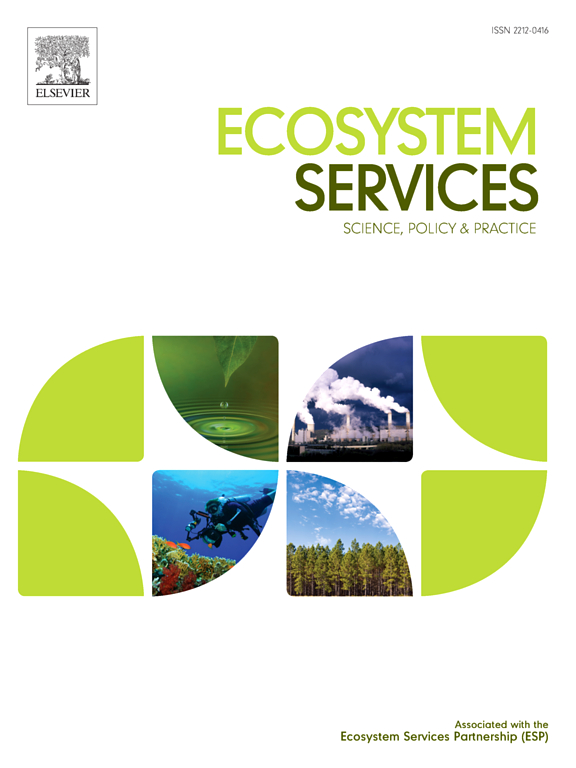游客集群对山区保护区文化生态系统服务的体验差异
IF 6.6
2区 环境科学与生态学
Q1 ECOLOGY
引用次数: 0
摘要
保护区有助于保护自然及相关的文化生态系统服务 (CES) 和价值,如娱乐和教育机会、野生动物观察、美景、灵感和归属感。保护区的知情管理需要考虑不同类型游客对 CES 的不同使用和偏好,以增加体验自然的机会,同时避免与生物多样性保护发生冲突。因此,了解游客特征与他们对特定 CES 需求之间的联系非常重要,尤其是在脆弱的山区生态系统中。在此,我们将对四个欧洲山区保护区的游客进行的个人现场调查和参与式制图所获得的信息结合起来。我们分析了游客使用八种 CES 的频率及其社会人口信息,确定了三个游客群组。我们还评估了每个游客集群所使用的 CES 地点的空间分布情况。我们的研究结果表明,在最常使用的 CES 和使用这些 CES 的空间位置方面,游客群组之间都存在很大差异。我们认为,更好地了解游客体验自然的方式与山区保护区及其周边环境管理息息相关。本文章由计算机程序翻译,如有差异,请以英文原文为准。
Differences in the experience of cultural ecosystem services in mountain protected areas by clusters of visitors
Protected Areas contribute to the conservation of nature with associated cultural ecosystem services (CES) and values, such as recreational and educational opportunities, wildlife observation, scenic beauty, inspiration and sense of belonging. Informed management of Protected Areas needs to consider the distinct use and preferences for CES of different types of visitors to increase opportunities for nature experience while avoiding conflicts with biodiversity conservation. Therefore, it is important to understand the linkages between visitor characteristics and their demand for specific sets of CES, particularly in fragile mountain ecosystems. Here we do so by combining information from individual on-site surveys and participatory mapping of visitors in four European mountain Protected Areas. We analysed visitors’ frequency of use of eight CES and their socio-demographic information, identifying three clusters of visitors. We also assessed the spatial distribution of CES locations used by each visitor cluster. Our results highlight strong differences between clusters both in the most frequently experienced CES and in the spatial location where those CES were experienced. We suggest that a better understanding of visitors regarding the way they experience nature is relevant for the environmental management of mountain Protected Areas and their surroundings.
求助全文
通过发布文献求助,成功后即可免费获取论文全文。
去求助
来源期刊

Ecosystem Services
ECOLOGYENVIRONMENTAL SCIENCES&-ENVIRONMENTAL SCIENCES
CiteScore
14.90
自引率
7.90%
发文量
109
期刊介绍:
Ecosystem Services is an international, interdisciplinary journal that is associated with the Ecosystem Services Partnership (ESP). The journal is dedicated to exploring the science, policy, and practice related to ecosystem services, which are the various ways in which ecosystems contribute to human well-being, both directly and indirectly.
Ecosystem Services contributes to the broader goal of ensuring that the benefits of ecosystems are recognized, valued, and sustainably managed for the well-being of current and future generations. The journal serves as a platform for scholars, practitioners, policymakers, and other stakeholders to share their findings and insights, fostering collaboration and innovation in the field of ecosystem services.
 求助内容:
求助内容: 应助结果提醒方式:
应助结果提醒方式:


